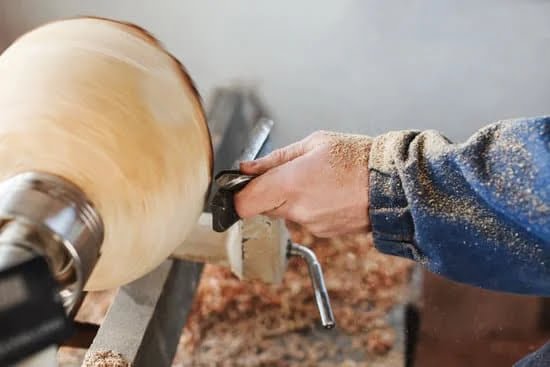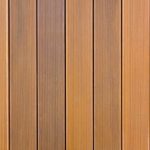When it comes to woodworking, having a dedicated cut off table is essential. This article will guide you through the process of creating your own cut off table, from choosing the right design to gathering the necessary tools and materials and providing step-by-step instructions on building a sturdy and functional table.
A cut off table is a vital tool in any woodworking project, as it provides a stable and secure surface for making clean and accurate cuts. Without a proper table, trying to make precise cuts can be challenging and even dangerous. A dedicated cut off table not only enhances safety but also improves efficiency and accuracy in your woodworking tasks.
Choosing the right table design for your specific woodworking needs is crucial. There are various designs available, each with its own set of pros and cons. Factors such as space limitations, budget constraints, and the type of projects you typically work on should all be considered when selecting the most suitable design for your workshop. In the next sections, we will explore different designs in detail, weigh their advantages and disadvantages, and help you make an informed decision.
So let’s dive into this comprehensive guide on how to make a cut off table for woodworking. From understanding why it is essential to exploring different design options, gathering the necessary tools and materials, to providing step-by-step instructions on constructing a robust table – we have got you covered. By following these guidelines and tips provided throughout this article, you’ll soon have your very own reliable cut off table that will greatly enhance your woodworking experience.
Choosing the Right Table Design for Your Woodworking Needs
Choosing the right table design for your woodworking needs is essential to ensure that you have a functional and efficient cut off table. There are various designs available, each with their own pros and cons. By considering your specific requirements and project types, you can select the design that best suits your needs.
Different Types of Cut Off Table Designs
- Basic Cut Off Table: This is the simplest design option, consisting of a sturdy frame with a flat tabletop surface. It provides a versatile workspace for general cut off tasks and can be easily customized with additional features.
- Sliding Table Saw: Ideal for larger woodworking projects and professional use, this design incorporates a sliding table mechanism that enables smooth and accurate crosscuts. It offers increased stability and control during operation.
- Miter Saw Station: A miter saw station combines a cut off table with dedicated space for a miter saw. This design is perfect for making precise miter cuts at various angles, allowing for greater versatility in woodworking projects.
Factors to Consider when Selecting a Suitable Design
When choosing the right table design for your needs, consider the following factors:
- Available Space: Assess the size of your workshop or work area to determine what size of cut off table will fit comfortably. Consider whether mobility or stability is more important in your workspace.
- Project Types: Think about the types of woodworking projects you typically undertake. If you frequently work on large pieces of lumber, a sliding table saw might be more suitable than a basic cut off table.
- Budget: Determine how much you are willing to invest in building or purchasing a cut off table. Different designs come at varying costs, so it’s important to set a budget that meets your requirements without stretching yourself too thin.
- Personal Preferences: Consider any additional features or functionalities that you prefer in a cut off table design, such as built-in storage, dust collection systems, or adjustable fences. Customizing the design will result in a table that serves your specific needs.
By considering these factors and understanding the pros and cons of each design option, you can choose the right table design that fits your woodworking needs and enhances your overall woodworking experience.
Gathering the Necessary Tools and Materials
When embarking on the construction of a cut off table for woodworking, it is essential to gather all the necessary tools and materials before starting the project. Having everything prepared will ensure a smooth construction process and help create a sturdy and functional table. Below is a list of the essential tools and materials required to build a cut off table, along with their purpose and functionality in the construction process.
- Lumber: The main material used in building the cut off table is lumber. It is crucial to select high-quality and durable lumber that can withstand the demands of woodworking tasks. Common choices include plywood, MDF (medium-density fiberboard), or hardwood boards.
- Screws: To assemble the various components of the table, screws are necessary. Choosing appropriate screws that are suitable for woodwork projects will ensure strong connections between different parts of the table.
- Drill: A drill is needed to create pilot holes for screws before driving them into the wood. Having a drill with adjustable torque settings is recommended to prevent over-tightening or stripping of screws.
- Saw: A saw will be used to cut lumber to the required measurements during construction. Depending on personal preference and available tools, options include circular saws, miter saws, or table saws.
- Measuring tools: Accurate measurements are essential when cutting lumber for the frame and tabletop. Measuring tape, combination squares, and speed squares are useful tools for ensuring precise dimensions.
- Clamps: Clamps are necessary for holding pieces of wood together securely while attaching them with screws or joining them using other techniques such as dado joints or biscuit joints.
- Level: A level is used to check if surfaces are horizontally flat during assembly to ensure stability and an even working surface.
- Screwdrivers/Wrenches: Depending on the types of screws used, having screwdrivers or wrenches of the appropriate size and type will be necessary for tightening or loosening them.
- Sandpaper: Sandpaper is essential for smoothing out rough edges and surfaces on the table. Different grits of sandpaper may be required depending on the desired level of smoothness.
- Safety gear: Lastly, it is crucial to have appropriate safety gear, including gloves, safety glasses, and a dust mask, to protect against potential injuries and airborne particles during construction.
Having these tools and materials in hand before starting the project will ensure a seamless construction process for your cut off table. They are vital for building a sturdy and functional table that will enhance your woodworking experience.
Step-by-Step Guide to Building a Sturdy and Functional Cut Off Table
Building a sturdy and functional cut off table is essential for any woodworking enthusiast. Not only does it provide a dedicated workspace specifically designed for cut-off tasks, but it also ensures safety and precision in your woodworking projects. In this section, we will provide a step-by-step guide on how to build your own cut off table.
Step 1: Preparing the work area and ensuring safety measures are in place
Before you begin constructing your cut off table, it’s important to prepare your work area. Clear any clutter or debris that may impede your progress and ensure you have ample space to maneuver around the table during construction. Additionally, make sure to wear appropriate safety gear such as goggles and gloves.
Step 2: Measuring and cutting the lumber for the table’s frame
Measure the dimensions you desire for your cut off table and mark them on the lumber of your choice. Use a tape measure and carpenter’s square to ensure accuracy. Once marked, carefully cut the lumber using a circular saw or miter saw according to your measurements.
Step 3: Assembling the frame using appropriate joinery techniques
To construct a sturdy frame, utilize appropriate joinery techniques such as pocket hole joinery or mortise-and-tenon joints. These techniques will ensure stability and durability in your cut off table. Follow manufacturer instructions for pocket hole joinery jigs or use traditional woodworking tools for mortise-and-tenon joints.
Step 4: Constructing the tabletop and attaching it securely to the frame
Next, construct the tabletop by measuring and cutting plywood or other suitable material according to the dimensions of your frame. Attach it securely to the frame using wood screws or nails, ensuring that it lies flat and even with no protrusions.
Step 5: Adding additional features for improved functionality
Consider adding additional features to enhance the functionality of your cut off table. For example, install fences along the sides of the tabletop to guide your cutting tasks and prevent wood from shifting. Alternatively, incorporate T-tracks onto the tabletop for easy attachment of jigs and fixtures.
Step 6: Sanding, finishing, and painting the cut off table for a professional look
After assembling the table, sand down any rough edges or surfaces using sandpaper or a sander. Apply a finish of your choice to protect the wood and give it a professional appearance. Consider painting the table with durable paint to add another layer of protection.
By following these step-by-step instructions, you can build a sturdy and functional cut off table that will greatly enhance your woodworking projects.
Essential Safety Tips for Using a Cut Off Table
Using a cut off table in woodworking projects can be a valuable tool, but it is crucial to prioritize safety when operating one. This section will provide essential safety tips to ensure a safe woodworking experience.
Understand Potential Hazards
Before using a cut off table, it is important to be aware of the potential hazards involved. Some common risks associated with these tables include kickbacks, flying debris, and accidental contact with the spinning blade. Understanding these hazards will help you take necessary precautions to minimize the risks.
Wear Protective Gear
Protective gear is essential when working with any power tool, including a cut off table. Always wear safety glasses or goggles to protect your eyes from flying debris, and consider wearing a face shield for added protection. Additionally, use hearing protection to safeguard against the noise generated by the machine.
Follow Manufacturer Guidelines
Every cut off table comes with specific guidelines provided by its manufacturer. These guidelines may cover important information on setup, maintenance, and operation of the table. It is imperative to read and follow these instructions carefully to ensure safe usage.
Keep Workspace Organized
Maintaining a clutter-free workspace is essential for safe woodworking practices. Remove any loose tools or materials from the table before turning it on and keep your work area clean at all times. A clutter-free workspace reduces the chances of accidents or interruptions during cutting tasks.
Use Proper Feeding Techniques
Proper feeding techniques are crucial for achieving clean and accurate cuts while using a cut off table. Ensure that your hands are positioned away from the areas where they could come into contact with the blade. Use push sticks or push blocks to guide the wood through the blade safely.
Disconnect Power Before Making Adjustments
When making adjustments or changing blades on your cut off table, always disconnect the power supply to prevent accidental activation. Unplugging the table or turning off the main power switch will help ensure your safety when working on the machine.
Following these essential safety tips will greatly reduce the risk of accidents and injuries when using a cut off table for woodworking projects. Remember, prioritizing safety is just as important as any other aspect of your woodworking practice.
Practical Tips and Techniques for Maximizing the Efficiency of a Cut Off Table
A cut off table is an essential tool in woodworking, providing a safe and efficient workspace for making precise cuts. To optimize its functionality, there are several practical tips and techniques that woodworkers can employ. By following these guidelines, you can enhance your efficiency and accuracy when using a cut off table.
1. Proper Positioning and Feeding Techniques:
When using a cut off table, it’s crucial to position yourself correctly to have full control over the wood piece. Stand to the side of the blade with your body slightly angled away from it. This positioning allows you to maintain balance and visibility while feeding the wood through the blade.
Additionally, pay attention to the way you feed the wood into the blade. Avoid forcing or pushing too hard as this can lead to kickback or rough cuts. Instead, apply firm, consistent pressure while letting the blade do its work. Make sure each cut is completed before removing the wood from the table.
2. Jigs and Fixtures:
Maximize your efficiency by utilizing various jigs and fixtures that are compatible with your cut off table. Jigs are specialized tools that help guide and support workpieces during cutting operations. They provide stability, accuracy, and repeatability in performing specific tasks.
Common jigs that can be used with a cut off table include miter sleds for angled cuts, push blocks for safety while handling small pieces of wood, and featherboards for securing narrow stock against the fence during rip cuts.
3. Workflow Optimization:
Streamline your woodworking processes by setting up your cut off table in an organized manner. Arrange frequently used tools within easy reach to minimize downtime searching for equipment. Use dividers or bins to keep smaller items organized and easily accessible.
Consider incorporating storage options into your table design such as drawers or shelves underneath or attachable organizers along the sides for quick access to frequently used items like pencils, tape measures, or safety glasses.
Taking the time to optimize your workflow and set up an organized work area can lead to increased efficiency, reduced errors, and a more enjoyable woodworking experience.
By implementing these practical tips and techniques, woodworkers can maximize the efficiency of their cut off table. From proper positioning and feeding techniques to utilizing jigs and fixtures, these strategies will result in cleaner cuts, improved accuracy, and safer operations. Additionally, organizing your workspace and optimizing your workflow will save time and contribute to a smoother woodworking process overall.
Maintenance and Upkeep of Your Cut Off Table
Keeping your cut off table in good condition is essential for prolonging its lifespan and ensuring optimal functionality. Regular cleaning and maintenance are necessary to prevent damage and maintain the accuracy of your table. Here are some tips on how to maintain and upkeep your cut off table:
Cleaning
Regularly clean your cut off table to remove sawdust, debris, and other materials that can accumulate over time. Use a vacuum or brush to remove loose particles from the tabletop, frame, and other components of the table. Wipe down the surface with a damp cloth to remove any stubborn dirt or stains.
Lubrication
To keep the moving parts of your cut off table working smoothly, it is important to lubricate them regularly. Apply an appropriate lubricant, such as machine oil or silicone spray, to the pivot points, slide rails, gears, or any other areas that require lubrication. This will help reduce friction and ensure smooth operation.
Inspection
Regularly inspect your cut off table for wear and tear. Check for loose bolts or screws, damaged parts, cracks in the frame or tabletop, or any signs of instability. If any issues are found, address them promptly to prevent further damage or safety hazards.
Alignment and Calibration
Over time, your cut off table may require realignment to maintain accuracy. Check if the blade is aligned parallel to the miter slot or fence by using a specialized alignment tool or a reliable measuring instrument like a dial gauge. If necessary, make adjustments using the manufacturer’s instructions.
Storage
When not in use, store your cut off table in a dry area away from moisture and extreme temperature fluctuations. Covering it with a dust cover can help protect it from dust particles that may settle on its surface.
Repair
In case of any damages or malfunctions, refer to the manufacturer’s guidelines or consult a professional for repairs. It is crucial to address any issues promptly to prevent further damage and ensure the safety of your woodworking projects.
By following these suggestions for maintenance and upkeep, you can extend the lifespan of your cut off table and ensure its continued functionality. Regular cleaning, lubrication, inspection, alignment, storage, and repair are essential steps in maintaining your table’s performance and keeping it in excellent working condition.
Project Showcasing
Woodworking projects can be both functional and aesthetically pleasing, with the right tools and equipment. One essential tool for any woodworking enthusiast is a cut off table. In this section, we will showcase a selection of inspirational woodworking projects that have benefited from the use of a cut off table. These projects demonstrate the versatility and efficiency that a dedicated table provides, allowing for precise and clean cuts.
1. Coffee Table with Intricate Design:
This coffee table project required precise cutting and assembly to achieve its intricate design. By using a cut off table, the woodworker was able to make accurate crosscuts and miter cuts on various pieces of wood, ensuring that each joint fit perfectly together. The stability and flat surface provided by the cut off table allowed for seamless assembly, resulting in a stunning coffee table that showcases both craftsmanship and creativity.
2. Bookshelf with Customized Shelves:
Building a bookshelf often involves cutting numerous shelves to specific dimensions. A cut off table proved invaluable in this project as it ensured uniformity in size and enabled the woodworker to make reliable repetitive cuts with ease. The straight cuts made on the cut off table allowed the shelves to fit precisely into the frame, creating a sturdy bookshelf capable of holding heavy books without sagging.
3. Decorative Wall Art Panels:
This woodworking project involved creating decorative wall art panels with intricate patterns carved into them. Using a cut off table facilitated precise ripping cuts on large sheets of plywood, enabling the woodworker to create symmetrical panels without any variations in width or length. Additionally, by attaching jigs and fixtures to their cut off table, they were able to make consistent plunge cuts for carving patterns into each panel, resulting in visually striking wall art.
These showcased projects highlight just a few examples of how utilizing a cut off table can contribute to the success and quality of woodworking ventures. The stability, accuracy, and versatility offered by a dedicated table make it an indispensable tool for any woodworker, whether experienced or just starting out.
| Project Name | Description |
|---|---|
| Coffee Table with Intricate Design | An intricately designed coffee table that showcases precise cuts and flawless joinery. |
| Bookshelf with Customized Shelves | A sturdy bookshelf with custom-sized shelves made possible by accurate cuts on a cut off table. |
| Decorative Wall Art Panels | Intricate patterns carved into plywood panels using plunge cuts made on a cut off table. |
Conclusion
In conclusion, building a cut off table for woodworking projects offers numerous benefits and can greatly enhance your overall woodworking experience. Throughout this article, we have discussed the importance of having a dedicated table for cut off tasks and explored different design options to suit your specific needs. We have also provided a step-by-step guide on how to construct a sturdy and functional cut off table, along with essential safety tips and practical techniques for maximizing efficiency.
Having a cut off table not only ensures safety by providing a stable and controlled work surface, but it also improves accuracy and precision in your cuts. By using a dedicated table, you can focus on making clean cuts without worrying about damaging other surfaces or endangering yourself. The added features such as fences or T-tracks further enhance functionality and make complex woodworking tasks easier to accomplish.
Additionally, building your own cut off table allows you to customize it according to your requirements. You can choose the design that best suits your workspace, select materials that are within your budget, and add additional features as needed. This flexibility enables you to create a highly efficient and personalized work area that optimizes workflow while saving time and effort.
We encourage you to start building your own cut off table today. By investing time into constructing this essential woodworking tool, you will improve the quality of your projects while ensuring the safety of both yourself and your workspace. With proper maintenance and regular upkeep, your cut off table will serve you well for many years to come. So why wait? Get started on creating your own dedicated space for clean cuts and precise woodworking now.
Frequently Asked Questions
How do you cut a wood table at home?
Cutting a wood table at home can be done using a variety of tools, depending on the desired outcome and available resources. One common method is to use a circular saw with a fine-toothed blade. Ensure the table is secured in place before making any cuts to prevent it from moving or sliding.
Measure and mark the desired dimensions on the table surface, then carefully guide the circular saw along the marked lines, applying steady and controlled pressure. It’s essential to prioritize safety by wearing appropriate protective gear, such as goggles and gloves, and always follow the manufacturer’s instructions for operating any power tool.
How do you make a plywood cutting grid?
To make a plywood cutting grid, start by selecting a piece of plywood that is both sturdy and flat. Measure and mark out equal-sized squares or rectangles on the plywood surface, ensuring they are spaced evenly to create a grid pattern. The size of each square or rectangle can vary based on personal preference or project requirements.
Use a straight edge ruler or T-square to ensure accurate measurements and precise markings. Once all the markings are in place, carefully cut along the marked lines using a jigsaw or circular saw equipped with a fine-toothed blade. Sand down any rough edges or corners as needed to create a smooth cutting surface.
How do you cut lumber without a table saw?
If you need to cut lumber without access to a table saw, there are alternative methods that can still yield effective results. One option is to use a hand saw, specifically either a crosscut saw or rip saw, depending on whether you need to cut across the grain (crosscut) or along the length of the board (ripping). Mark your desired cut line accurately on the lumber using a pencil or marking knife, then secure it firmly in place using clamps or other suitable means to prevent movement during cutting.
With patience and care, follow your marked line while applying even pressure with your hand saw to achieve clean cuts. Remember to maintain proper body mechanics and use long and fluid strokes to ensure smooth and accurate cuts.

Hi everyone! I’m a woodworker and blogger, and this is my woodworking blog. In my blog, I share tips and tricks for woodworkers of all skill levels, as well as project ideas that you can try yourself.





